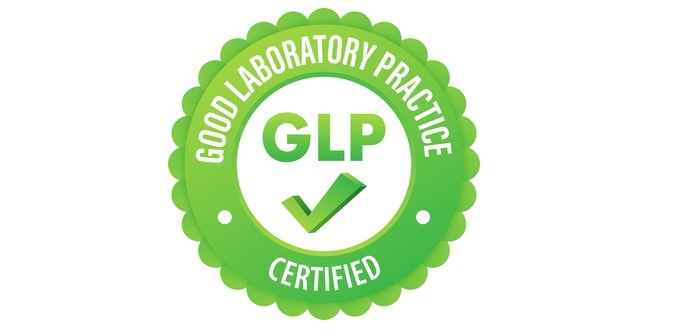
 Data Structure
Data Structure Networking
Networking RDBMS
RDBMS Operating System
Operating System Java
Java MS Excel
MS Excel iOS
iOS HTML
HTML CSS
CSS Android
Android Python
Python C Programming
C Programming C++
C++ C#
C# MongoDB
MongoDB MySQL
MySQL Javascript
Javascript PHP
PHPPhysics
Chemistry
Biology
Mathematics
English
Economics
Psychology
Social Studies
Fashion Studies
Legal Studies
- Selected Reading
- UPSC IAS Exams Notes
- Developer's Best Practices
- Questions and Answers
- Effective Resume Writing
- HR Interview Questions
- Computer Glossary
- Who is Who
What Are Good Lab Practices (GLP)?
Introduction
Good Laboratory Practice (GLP) is a set of guidelines, procedures, and standards for conducting non-clinical laboratory studies in accordance with regulatory requirements. GLP regulations are put in place to ensure the accuracy, reliability, and integrity of data generated from laboratory studies.
In this article, we will discuss what GLP is, why it is important, and the key elements of good laboratory practices.

What are Good Laboratory Practices (GLP)?
GLP refers to a set of principles that are designed to ensure the quality and reliability of laboratory studies. These principles encompass all aspects of laboratory work, including the design, conduct, and reporting of studies.
GLP regulations are in place to provide a framework for ensuring that laboratory studies are conducted in a consistent, reliable, and reproducible manner.
Why are Good Laboratory Practices Important?
The importance of GLP cannot be overstated. It is critical that laboratory studies are conducted with accuracy and precision to ensure that the data generated is reliable and can be used to make informed decisions.
GLP provides a framework for ensuring that laboratory studies are conducted in a consistent manner, with the same level of rigor and attention to detail in each study.
The key benefits of adhering to GLP include −
Consistency
By following a set of guidelines and procedures, laboratory studies are conducted in a consistent manner. This ensures that the data generated is comparable across different studies and can be used to draw meaningful conclusions.
Quality
GLP guidelines are designed to ensure that laboratory studies are conducted with accuracy, precision, and attention to detail. This results in data that is of high quality and can be relied upon for decision making.
Reliability
GLP guidelines are designed to ensure that laboratory studies are conducted with reliability and repeatability. This means that the results generated from a study can be replicated in another laboratory using the same methods and procedures.
Compliance
Adhering to GLP guidelines is required by regulatory agencies in many countries. Compliance with these guidelines is critical to obtaining regulatory approval for products or substances that are being tested in the laboratory.
Key Elements of Good Laboratory Practices
The key elements of GLP include −
Facility and Equipment
The laboratory must have adequate space, equipment, and resources to conduct studies. Equipment must be properly maintained, calibrated, and validated to ensure accuracy and precision.
Standard Operating Procedures (SOPs)
SOPs must be developed and followed for all laboratory procedures. These SOPs should be written in a clear and concise manner and should be followed consistently across all studies.

Study Design
Study design must be appropriate for the research question being asked. The study design should be reviewed and approved by a qualified individual, such as a statistician or study director.
Personnel
Personnel involved in laboratory studies must be appropriately trained, qualified, and experienced. They must also be provided with ongoing training and development to ensure that their skills are up to date.
Documentation
Accurate and complete documentation is critical for GLP compliance. All laboratory procedures, observations, and data must be documented in a clear and concise manner. Records must be maintained for a specified period of time and must be readily available for review.
Quality Control
Quality control measures must be implemented throughout the laboratory study to ensure accuracy and precision. These measures may include instrument calibration, sample analysis, and data verification.
Data Analysis and Reporting
Data generated from laboratory studies must be analysed and reported in a clear and concise manner. Results must be presented in a format that is understandable and reproducible. Any deviations from SOPs or unexpected results must be documented and explained.
Conclusion
Good Laboratory Practices (GLP) are critical for ensuring the quality, reliability, and integrity of laboratory studies. Adhering to GLP guidelines provides a framework for consistent and reliable laboratory practices, which ultimately leads to better decision-making and outcomes.
By ensuring that laboratory studies are conducted with accuracy, precision, and attention to detail, GLP guidelines help to minimize errors and bias in research.
In addition, compliance with GLP guidelines is required by regulatory agencies in many countries. Adherence to these guidelines is essential for obtaining regulatory approval for products or substances that are being tested in the laboratory. Failure to comply with GLP guidelines can result in costly delays or even rejection of regulatory submissions.
In summary, adherence to Good Laboratory Practices is crucial for the success of laboratory studies. By following the key elements of GLP, laboratories can ensure that their research is conducted in a consistent and reliable manner, resulting in high-quality data that can be relied upon for decision making.

